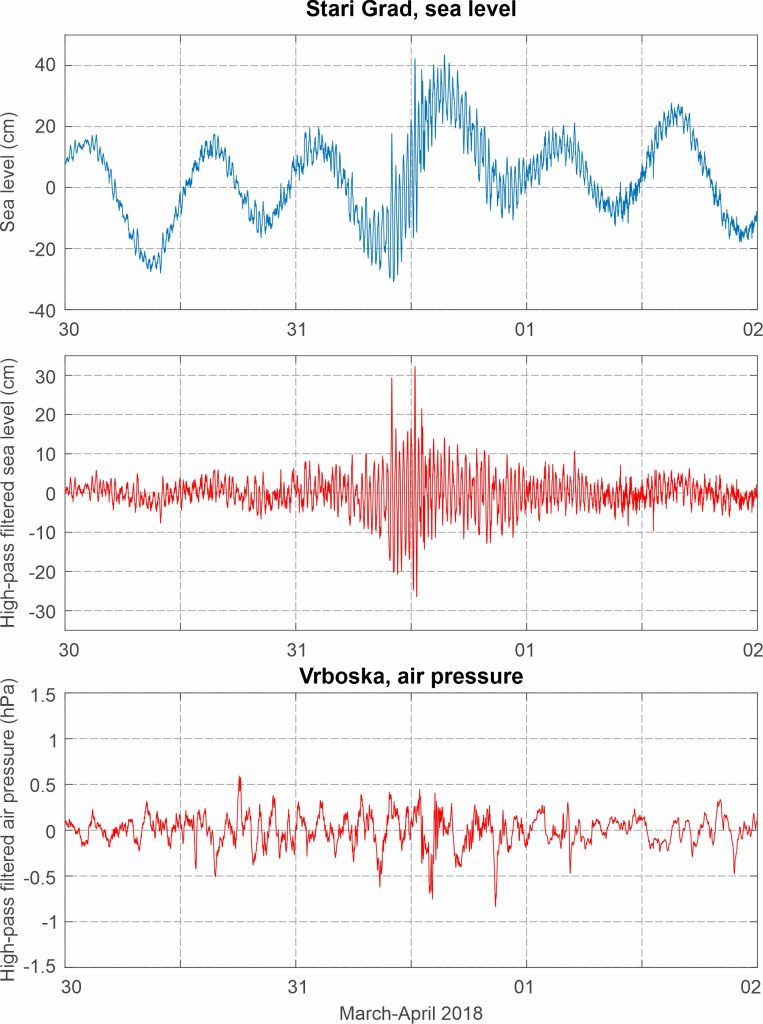(26) Stari Grad, 31 March 2018

In the afternoon hours of 31 March 2018, tsunami-like waves again hit Stari Grad on Hvar island. According to eyewitness reports, event was strongest around 15:00 UTC, when sea level suddenly rose by about 0.5 m above the promenade level (Dalmacija Danas, 31 March 2018). This event can be seen in Stari Grad tide gauge records as well. According to records, two strong waves hit the harbor, the first, with a wave height of 58.80 cm, around 11:00 UTC, and the second, with a wave height of 58.60 cm, around 13:20 UTC. Both waves had similar periods of ~20 min. Maximum sea surface elevation was concurrent to the second wave, as this was the time of high tide. In between these two waves, and after the second one, numerous waves with heights up to ~2/3 of maximum ones, and periods of 20-30 min were measured. Interestingly, no pronounced atmospheric pressure disturbances were recorded in Stari Grad (and nearby Vrboska) during the event.
The event coincided with a storm surge at Bakar.
Surface synoptic situation was favorable for generation of storm surges in the northern Adriatic. A mid-latitude cyclone was centered over the Alps, and sirroco wind (> 16 m/s), was blowing along the south Adriatic Sea. At the 850 hPa height, tongue of warm air mass was spreading from the central Sahara, across the central Mediterranean to the southern Adriatic. As a result, an upper-level temperature front was present over the Adriatic Sea. At the 500 hPa level, a front side of a trough was located over the western Mediterranean and the Adriatic Sea. Associated upper-level winds reached speeds of up to 60 m/s over the western Mediterranean and of up to 28 m/s over the Adriatic Sea.
